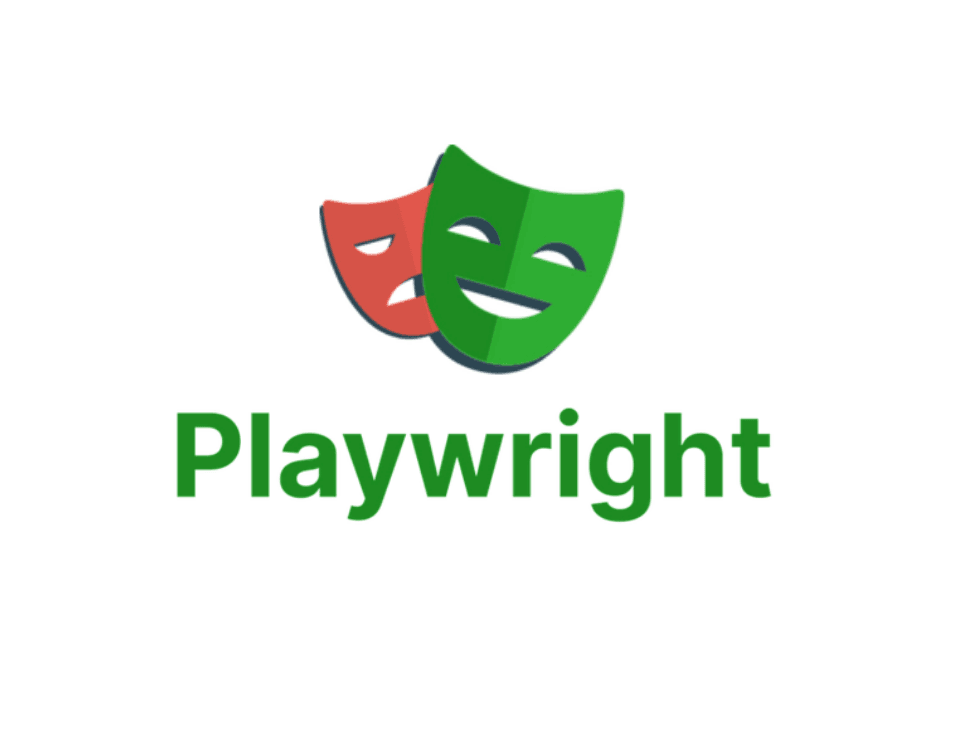Hire HTML5 Developers
Seamless team integration
On-demand scalability
Quick adaptation to changes
Expertise in diverse technologies
Results-driven approach

Skilled HTML5 Developers, Seamlessly Integrating Responsive Design, Focused on Delivering Exceptional User Interfaces
We craft dynamic web experiences with a focus on robust HTML5 foundations.
Our developers ensure seamless functionality and engaging user interfaces, built for long-term scalability.
Unlock the full potential of HTML5 to build advanced app structures that are both powerful and efficient.
We construct adaptable architectures designed to meet the demands of modern web applications.
Hire Expert HTML5 Developers for Scalable, High-Performance Web Solutions
Custom HTML5 Web Development
Develop dynamic, standards-compliant web applications specific to your business goals.
Benefits of Hiring HTML5 Developers
Cross-platform expertise
Efficient resource use
Fast feature implementation
Proactive issue resolution
Scalable solutions
Optimized performance

Tech Stack Expertise of Our HTML5 Developers
Our HTML5 developers possess deep expertise across the modern web stack and use HTML5 standards with proper structural approach ensuring robustness of applications or sites.
 HTML5
HTML5 CSS3
CSS3 JavaScript
JavaScript
 Playwright
Playwright
 Jenkins
Jenkins
Testimonials
The team delivered high-quality work that met our expectations in terms of design and functionality.
Productivity-focused companies trust Dappinity’s high-quality HTML5 Developers to build fast, scale smart, and deliver with confidence.
We help you access skilled, reliable HTML5 Developers who bring clarity, speed, and scalability to your projects — so you can focus on results, not resourcing.
Why Hire HTML5 Developers from Dappinity?
Dappinity provides expert HTML5 Developers offering scalable, innovative, and client-focused solutions while ensuring high quality and timely project delivery.
- Expert Developers
- Agile Project Management
- Cost Effective Solutions
- Superior Software Quality
- Optimized Operational Costs
- Time Zone Compatibility
Benefits of Dedicated HTML5 Developers
The dedicated HTML5 Developers team at Dappinity delivers innovative, scalable, and secure solutions, ensuring seamless collaboration and future ready applications.
- Tailored Software Solutions
- Cutting Edge Technology
- Agile Development Process
- Seamless Collaboration
- Future Ready Applications
- End to End Support
Hire HTML5 Developers Fast with Our Simple Process

Tell us what you need - tech stack, experience, timelines.

We send you pre-screened developers matched to your needs.

You interview. You decide. Start in as little as 72 hours.

Easily scale up or down. We stay flexible as you grow.
1Engagement Models (Full-time, Part-time, Hourly, Project-Based)
When hiring HTML5 developers, choosing the right engagement model is key to achieving your design and functionality goals:
- Full-time Developers: Perfect for businesses that need continuous HTML5 work, such as building large websites, updating UI elements, or integrating advanced HTML5 features (like WebSockets, multimedia support).
- Part-time Developers: Ideal for tasks like creating landing pages, implementing new HTML5 elements, or adding new features to an existing site without full-time commitment.
- Hourly Developers: A flexible choice for projects requiring specific HTML5 tasks, such as optimizing code, debugging, or improving accessibility features.
- Project-Based Developers: Great for clearly defined tasks, like building single-page applications (SPAs), integrating APIs, or designing HTML5-based interactive elements.
The right model depends on the scope, timeline, and ongoing needs of your web development project.
2Development Methodologies: Best for HTML5 Projects
Choosing a development methodology ensures your HTML5 project is organized and scalable. Here’s how different approaches fit into HTML5 development:
Agile:
Excellent for projects where HTML5’s dynamic capabilities are central to the app (e.g., HTML5 game development or real-time interactive pages). Agile allows quick iterations and continuous improvement.
Scrum:
Scrum is effective when breaking down large HTML5 projects (e.g., designing a fully responsive website or building HTML5 multimedia components) into manageable sprints, allowing for regular feedback and quality control.
Waterfall:
Works well for simpler, linear HTML5 tasks where the design and functionality are clear from the start, such as static web pages or one-time HTML5 page templates.
The right methodology keeps HTML5 development efficient and manageable, making sure the end product meets all expectations.
3Matching Tech Stack Needs with HTML5 Expertise
HTML5 developers are experts in building responsive, interactive, and media-rich web applications. Here’s how they integrate with your tech stack:
Frontend Technologies:
- Core Stack: HTML5, CSS3, JavaScript.
- Frameworks: React, Angular, VueJS, Svelte.
- Libraries & APIs: jQuery, WebSockets, WebRTC, Web Audio API, Geolocation API.
- UI/UX Design: Focused on semantic HTML, accessibility, mobile-first design, and performance optimization.
Backend Integration:
- Can integrate with backend technologies like NodeJS, PHP, Ruby on Rails, or Django for seamless user experiences.
- Supports server-side rendering and RESTful API consumption for interactive, data-driven websites.
Multimedia Support:
Native HTML5 video, audio embedding, Canvas for rendering, and SVG for scalable graphics.
SEO Optimization:
HTML5's semantic tags (e.g., <article>, <section>, <header>) help improve search engine rankings, making it easier for users to find your site.
Cross-Browser Compatibility:
HTML5 developers focus on ensuring websites are consistent across different browsers and devices, utilizing tools like Autoprefixer for vendor-specific prefixes and Polyfills for legacy browser support.
By hiring developers with HTML5 expertise, you ensure your site or application is feature-rich, responsive, and future-proof.
4Ensuring Code Quality for HTML5 Projects
Even with HTML5’s flexibility, it’s essential to maintain high standards of quality for a scalable and maintainable product:
Code Reviews:
- Review semantic HTML to ensure best practices, such as using correct tags and ensuring accessibility (e.g., proper use of <alt>, <label>, ARIA attributes).
- Ensure code is clean, maintainable, and follows established HTML5 conventions.
Automated Testing:
- Use tools like Mocha and Jasmine to test the functionality of HTML5 features like form validation, multimedia, and browser compatibility.
- Write unit tests and use Selenium for cross-browser testing.
Linting & Code Formatting:
- Tools: HTMLHint for HTML syntax checks, Prettier for formatting, and Stylelint for CSS code standards.
- Consistent code structure and naming conventions for maintainability.
Responsive Design Testing:
Use tools like BrowserStack or responsive simulators to ensure the website adapts smoothly across different screen sizes and devices.
Performance Optimization:
Minimize HTML5 file sizes using techniques like GZIP compression, and defer or async loading for JavaScript and CSS files.
By following these practices, HTML5 projects are faster, more accessible, and provide a better user experience.
5Security & IP Protection for HTML5 Developers
Security and intellectual property protection are crucial when working with HTML5 developers, especially when handling sensitive content and user data:
NDAs & Legal Agreements:
- Sign NDAs to ensure confidentiality of your project and design elements.
- Contracts should include IP ownership clauses to secure all HTML5 code, multimedia content, and website designs.
Source Code Management:
- Host code on secure platforms like GitHub, GitLab, or Bitbucket.
- Use private repositories and enable two-factor authentication (2FA) for added security.
Access Control:
- Use role-based access control (RBAC) to restrict access to code repositories and sensitive information.
- Revoke access once the project is completed or the developer’s engagement ends.
IP Ownership:
- Clearly define in your contract that all HTML5 files, code, and assets belong to your business.
- Ensure that any third-party code or libraries used are properly licensed.
IP protection ensures your business retains full control over the website or application’s design and functionality.
6Freelancer vs Dedicated HTML5 Developer: What’s Better for Your Project?
Choosing between a freelancer and a dedicated HTML5 developer depends on the complexity and long-term nature of your project:
Freelancers:
- Perfect for one-off tasks like building landing pages, styling individual sections of a website, or implementing specific HTML5 features.
- Freelancers are cost-effective and quick to hire for small projects.
Dedicated HTML5 Developers:
- Ideal for larger, long-term projects like building an entire website or creating a web application with complex HTML5 functionality.
- A dedicated developer ensures better collaboration, faster updates, and a consistent approach across the entire frontend.
If your project requires ongoing HTML5 work or complex interactive features, a dedicated developer will offer more stability and value.
Engage Dappinity for Your HTML5 Development
Team up with Dappinity to bring modern, high-performing HTML5 applications to life. Whether it's a lightweight landing page, a cross-device web platform, or a multimedia-rich app, our developers ensure speed, reliability, and usability—right from the first line of code.
600+
Project completed12+
Years Experience100%
Positive reviews92%
Customer RetentionTransparency
Strict Privacy Assurance with NDA
Talented Team of Developers
12 Months Free Support
Smooth Collaboration & Reporting
On time Delivery, No Surprises
Efficient & Adaptive Workflow
FAQs About Hiring HTML5 Developers
HTML5 is the latest version of the HTML (HyperText Markup Language), which is the foundation of web pages and applications. It introduces new elements, attributes, and APIs that enable developers to create modern, interactive, and multimedia-rich websites without relying on third-party plugins. HTML5's key improvements include better support for multimedia (audio, video), local storage, enhanced forms, semantic tags, and improved performance.
HTML5 introduces several key changes and features over previous versions, including:
1. New Elements: <article>, <section>, <nav>, <header>, <footer>, <aside>, and others forbetter semantic structure.
2. Multimedia Support: Native support for video and audio with the <video> and <audio> elements, reducing reliance on plugins like Flash.
3. Canvas and SVG: The <canvas> element for drawing graphics and the support for scalable vector graphics (SVG).
4. Local Storage: Web Storage API for storing data on the client side, allowing for offline support and faster load times.
5. Improved Forms: New form input types (e.g., email, date, range) and attributes (e.g., placeholder, autofocus) for better user experiences.
An HTML5 developer brings several advantages:
1. Responsive Design: HTML5 is integral to building responsive, mobile-first websites that adapt across devices.
2. Rich Multimedia Content: HTML5 developers can integrate native audio, video, and animations seamlessly without external plugins.
3. SEO Benefits: Proper use of semantic tags enhances accessibility and improves SEO.
4. Offline Support: With HTML5's local storage capabilities, developers can implement offline functionalities for progressive web apps (PWAs).
5. Better User Experience: HTML5 offers features like geolocation, drag-and-drop, and more, resulting in an interactive and engaging user experience.
HTML5 enhances UX in several ways:
1. Rich Media: Native support for video and audio means users don’t have to rely on plugins like Flash, providing smoother and faster media experiences.
2. Interactive Content: The <canvas> element and SVG enable creating dynamic graphics, animations, and games directly in the browser.
3. Mobile Support: HTML5 allows for mobile-friendly web apps that work seamlessly across devices, enhancing usability on smartphones and tablets.
4. Form Usability: New form input types and validation features reduce the need for complex JavaScript validation, improving user interaction with forms.
Yes! HTML5 is often used to build Progressive Web Apps (PWAs), which are web applications that provide an app-like experience on mobile devices. PWAs leverage HTML5 features like service workers, offline storage, and push notifications to deliver a fast, reliable, and engaging experience, even when the user is offline or on a slow network. For mobile-specific features, HTML5 can also be used with frameworks like PhoneGap or Cordova to build hybrid mobile applications.
HTML5 improves SEO and accessibility in various ways:
1. Semantic Elements: HTML5 provides meaningful elements like <header>, <footer>, <article>, and <nav>, which help search engines understand the structure of the page better.
2. Form Accessibility: HTML5's input types (e.g., email, tel, url) help assistive technologies guide users effectively.
3. Improved Rich Snippets: HTML5's <article> and <section> elements allow for structured data that search engines can use to generate rich snippets.
4. ARIA Support: HTML5 supports ARIA (Accessible Rich Internet Applications) attributes, making it easier to build accessible web apps for users with disabilities.
To enhance the performance of HTML5-based websites:
1. Optimize Media: Compress images, audio, and video files to reduce load times.
2. Leverage Local Storage: Use HTML5’s local storage for caching assets and reducing reliance on the server, improving performance during subsequent visits.
3. Asynchronous Loading: Use the async or defer attributes to load JavaScript files asynchronously, reducing page load times.
4. Minify and Combine Files: Minify HTML, CSS, and JavaScript files and combine them into fewer requests to reduce HTTP requests and improve load times.
HTML5 improves cross-browser compatibility by:
1. Standardizing Web APIs: Many web APIs (e.g., geolocation, localStorage, fetch) are standardized, ensuring consistent behavior across modern browsers.
2. Built-in Polyfills: HTML5 features like <video>, <audio>, and <canvas> are supported by all major browsers, and polyfills are available for older browsers.
3. Graceful Degradation: If certain HTML5 features are not supported, developers can implement fallback solutions (e.g., Flash for video or alternative content) to ensure a smooth experience across browsers.
Best practices for HTML5 development include:
1. Use Semantic HTML: Properly use semantic tags (e.g., <header>, <footer>, <main>) to improve SEO and accessibility.
2. Mobile-First Design: Ensure your HTML5 layout is responsive and mobile-friendly by utilizing media queries and flexible grid systems.
3. Optimize Performance: Compress images, use external stylesheets and scripts, and utilize caching techniques like local storage.
4. Validate Code: Regularly validate HTML5 code to ensure it’s clean, well-structured, and compatible with different browsers and devices.
Hiring an HTML5 developer from Dappinity is simple:
1. Share your project requirements (e.g., features, timeline, and target audience).
2. We’ll match you with a selection of skilled HTML5 developers.
3. Review their portfolios, conduct interviews, and choose the best fit.
3. Begin development with a smooth onboarding process, and receive continuous support throughout your project.













